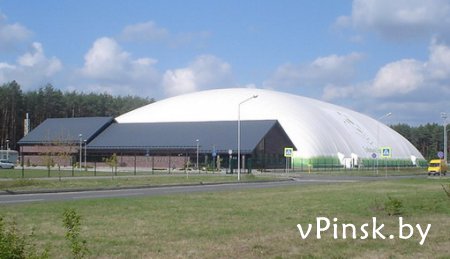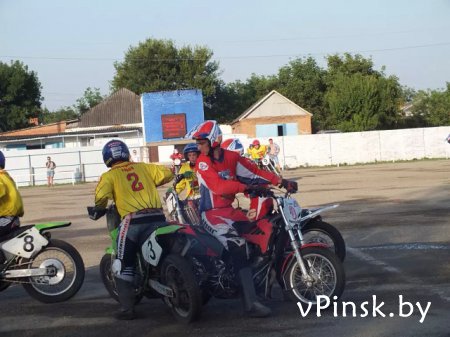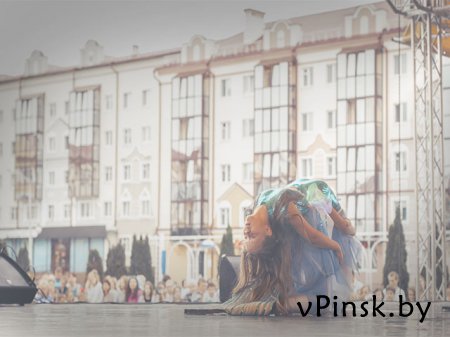Pinsk History of city :: Summary
Pinsk is one of the most ancient and rare places in Belarus, where pieces of stone writing of different epochs have been preserved together with and thanks to a thoroughly planned structure, historical centre of the city with the valuable architectural monuments of the 16-19th centuries and the city foundation that is an archeological monument of the 11-13th centuries. Pinsk was first mentioned in the Ipatjev scripts in 1097. The city lies at the confluence of the rivers, which flow into the Baltic and the Black seas. An ancient trade route (“iz variag v greki” route) linking the Northen Europe with Asia went through this land. Up to the middle of the 12th century the city belonged to Turov principality, later it became the centre of Pinsk principality. At the beginning of the 14th century it was under the rule of the Great Duchy of Lithuania as a city in the Troki Voyevodstvo. From 1539 it was the centre of a starostvo, from 1566 - a povet centre in the Brest Voyevodstvo. In 1581 the city got the right of autonomous administration under the Magdeburg Law together with its own emblem. During the Northern War in 1706 the city was ruined by Karl XII. A printing house appeared here in the 18th century. In 1882 Pinsk was crossed by the southern branch of the Polesje railway, this contributed to the growth of the city. From 1921 to 1939 Pinsk was annexed to Poland and was the centre of a povet. In 1939 it was reunited with the BSSR and became the centre of Pinsk Region, in 1940 – the centre of Pinsk District. From June 1941 to July 1944 Pinsk was occupied by German fascist invaders who killed more than 59 thousand people in the city and the district.
Pinsk is subject to regional authorities. It is situated in the south of the republic, 184 kilometres east of Brest. It lies on the right bank of the river Pina. Pinsk is a railway station of the Brest-Luninets line, a junction of the roads leading to Ivanovo, Ivatsevichi, Luninets, Stolin, it is also a river port. The population of the city is 131.1 thousand people. Pinsk is a large industrial and cultural centre of the republic. In 2002 the city celebrated its 905th anniversary. There are 30 different industrial enterprises in Pinsk. The most important of them represent light industry, timber and food processing, machine building and metalworking. Textile and yarn produced by the largest public company in the city “Polesje” is known far beyond the borders of the republic. The company comprises three separate factories, which produce fabrics, different kinds of yarn and knitted goods. Joint Venture Company “Pinskdrev” is one of the oldest and largest in the city. In 2000 it celebrated its 120th anniversary. The company includes 20 branches, which are involved in furniture manufacturing and timber processing. The production is exported into many countries. Among them are Germany, Sweden, Hungary, the USA, Poland, Austria, Great Britain, France, Japan, Mongolia, Portugal and others. The variety of the production of the other city enterprises is the following: oilcloth, fabrics, chemicals, metalwork structures, building materials, press and casting machines, artificial leather, haberdashery, clocks, hydraulically operated lifts, water heaters and so on.
Pinsk is famous for its original culture, colorful festivals. There are two music schools, a choreography school, fine arts schools, 8 libraries, a concert hall, recreation centres, the Republican Museum of the Belarusian Polesje, theatre “Diogen”.
There are 91 sights of historical, architectural, archeological value. Pinsk is one of the unique cities of Belarus where the original city planning and architectural, historical, cultural monuments have been preserved. The historical centre of the city is an architectural monument of the national importance. It is not by chance that a Russian poet, A.Blok, compared Pinsk to the legendary city of Kitezh (Kitezh-grad). The architectural monuments of the central part of the city comprise Jesuit Collegiate Church, Franciscan Monastery, St.Barbara’s Church and the building of the former Bernardine monastery, Karl Baromey’s Catholic Church, Butrimovich’s Palace. The restored Karl Baromey’s Catholic Church houses the city concert hall. The preserved architectural monuments refer to different stages of the city planning. Much attention is paid to the maintenance and restoration of the monuments. One of the most attractive tourist sights is Jesuit Collegiate Church housing Museum of the Belarusian Polesje and a choreography school. The city has a park with more than 30 different kinds of plants, including blue spruce, thuja, hazel, ash, fir, sea-buckthorn. The largest tree is the Canadian poplar brought from the American continent. As for the rare plants, there is a robinia brought from Ukraine, American spruce, many chestnuts and a cork tree. Many writers and poets visited this land at different times and imprinted their impressions of the city in their works. Among them are Glinka, Turgenev, Kuprin, Blok, Gumiljev, Konopnitskaya, Kapustsinskiy, Leskov, Kolos, Krashevskiy, Dunin-Martsinkevich.
Поделитесь этим материалом со своими знакомыми и друзьями:
Погода в Пинске
Фотографии
Событие дня
-
От должности отстранили командира части, в которой погиб рядовой
Согласно итогам проверки, которая была организована военным ведомством из-за непринятия исчерпывающих мер по
Подробнее 0
Последние новости
Обновление Пинского сайтаСпортивное лето в Пинске
Сборная Беларуси отправилась на XXX чемпионат Европы
В Пинске прошёл фестиваль сценического искусства
Чемпионы не отдыхают









